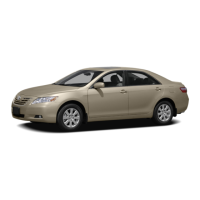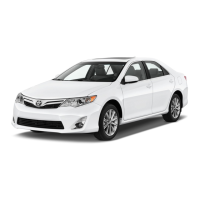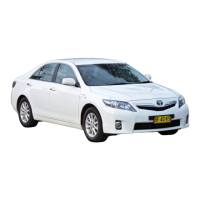
Do you have a question about the Toyota 2013 Camry Hybrid and is the answer not in the manual?
| Brand | Toyota |
|---|---|
| Model | 2013 Camry Hybrid |
| Category | Automobile |
| Language | English |
Important safety information and precautions for handling the high voltage system and hot parts of the hybrid system.
Operations performed by carrying the electronic key, such as unlocking doors and starting the system.
Guidelines for correct use of seat belts, fastening/releasing, and adjusting shoulder anchor height.
Explanation of SRS airbag system components and their function in providing occupant protection.
Information on selecting and installing child restraint systems, emphasizing rear seat safety.
Procedures for starting the hybrid system, driving, stopping, and parking the vehicle safely.
How to use cruise control to maintain a set speed without depressing the accelerator pedal.
Overview of systems like ABS, VSC, TRAC, and Hill-start assist that enhance driving safety.
Procedures for washing, drying, waxing, and protecting the vehicle's exterior surfaces.
Guidance on cleaning and protecting leather and synthetic leather areas, carpets, and seat belts.
Overview of general, scheduled, and do-it-yourself maintenance, plus recommendations for repair and replacement.
Precautions to follow when performing maintenance, including safety measures for the engine compartment and electric cooling fans.
Instructions on checking and adding engine oil, including oil selection and quantity.
Information on checking and adding engine coolant and power control unit coolant levels.
Guidance on checking and adding brake fluid, including cautions for filling the reservoir.
Steps for checking and replacing fuses in the engine compartment and under the instrument panel.
Instructions on how to replace the battery in the electronic key, including necessary tools and precautions.
Recommendations for towing the vehicle, including before towing checks and methods like lift-type or flatbed trucks.
Actions to take when warning lights or buzzers activate, including brake system warnings and parking brake engagement.
Information on various warning lights like charging system, low oil pressure, and high coolant temperature.
How to address specific warning messages like open doors, low fuel, and seat belt reminders.
What to do when a warning message appears on the multi-information display, and how to contact Toyota dealer.
Step-by-step guide on how to remove the flat tire, take out the jack, and install the spare tire.
Procedure for starting the hybrid system using the electronic key when the normal method fails.
What to do if the vehicle overheats, including checking coolant levels and fans.
Troubleshooting steps for when the hybrid system fails to start, including checking the electronic key and 12-volt battery.












